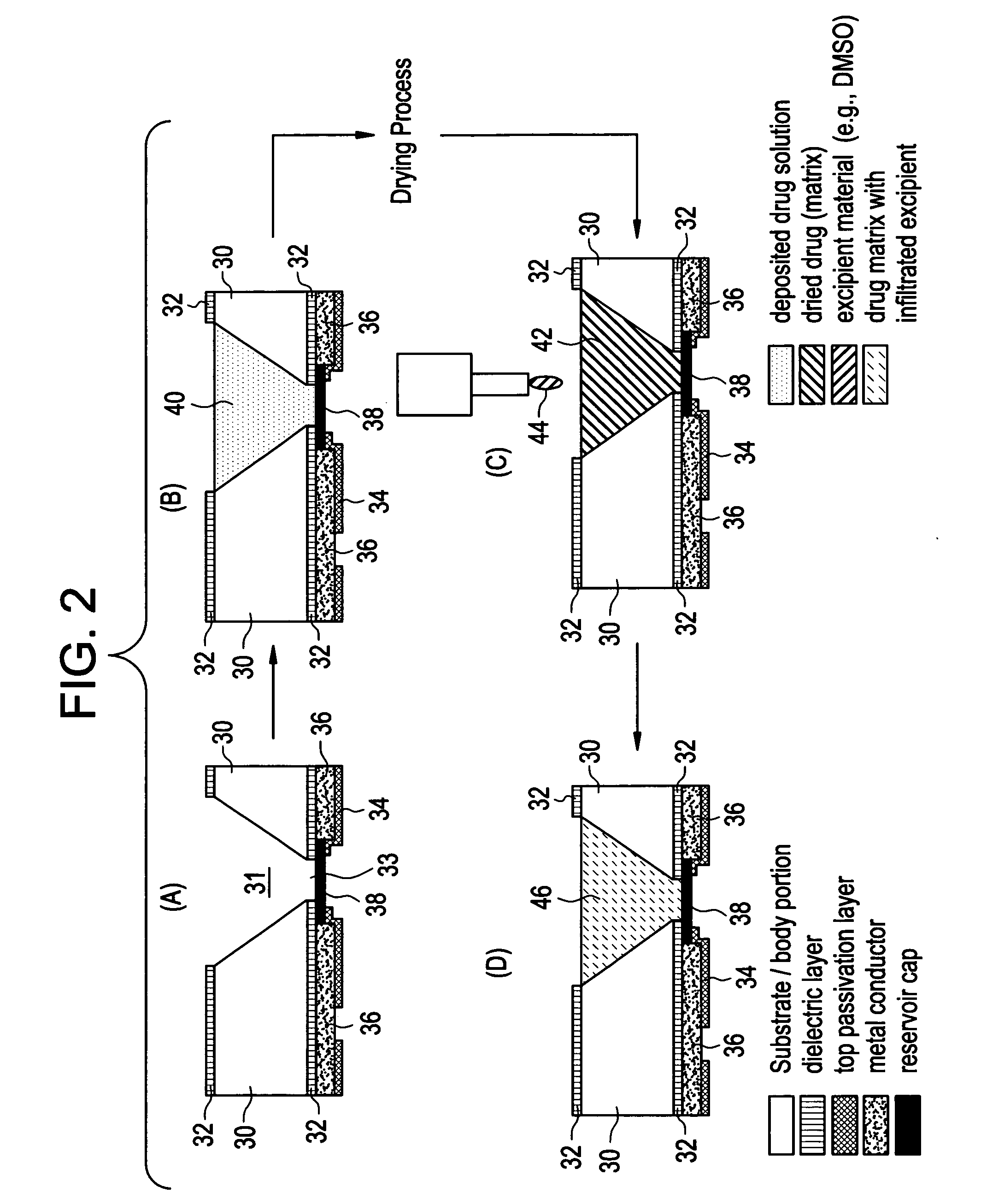Devices and methods for measuring and enhancing drug or analyte transport to/from medical implant
a technology of analyte and drug, which is applied in the field of medical devices implantation, can solve the problems of adversely affecting the transport of drug from the device to the device, formation of fibrous tissue capsules, and inability to accurately measure the effect of drug transport, and achieves the effect of enhancing the transport of drug molecules and enhancing the transport of drug
- Summary
- Abstract
- Description
- Claims
- Application Information
AI Technical Summary
Benefits of technology
Problems solved by technology
Method used
Image
Examples
example 1
Testing Device Design
[0145] The testing device would be in the form of a closed loop implant test system. In this design, a microchip device will be attached along a length of metabolite impermeable tubing, substantially as shown in FIG. 13. The microchip will contain active reservoir caps that can be selectively disintegrated at any time following implantation. The design may include the placement of suture loops if necessary or the placement of surgical mesh to reduce implant motion which will disrupt the normal wound healing response. The microchip will be sealed to the test loop system, and will include the electrical system, used to activate the membranes and open the reservoirs and the percutaneous connectors.
[0146] The testing device will be implanted into the subcutaneous space of the animal model, and the incision allowed to heal for a pre-determined period of time. The wiring and tubing will be accessible through a percutaneous connector. Then, at selected times, the res...
example 2
[0147] In vitro testing of the testing device to be used in animals is important prior to implantation. A system leak test will be performed. The device will be placed in a saline solution. The membranes of the device will remain intact throughout the experiment. An easily detectable compound (e.g. radio-labeled mannitol) will be pushed through the system using a pump. At pre-determined time-points, the saline will be sampled and analyzed for any evidence of the molecule pushed through the system. This experiment must be repeated on multiple devices to ensure proper device assembly. FIG. 15 illustrates the test set up.
example 3
In Vitro Testing
[0148] Prior to any in vivo studies, the device will be tested in vitro to ensure device functionality. The device will be placed in a saline solution. A saline solution will be pumped through the system. The microchip reservoirs will then be ablated, opening access to the test loop system. A specified amount of an easily detected compound will be injected into the saline solution in which the device is immersed. Saline solution will be pumped through the system and collected at certain time intervals. The outlet saline will be analyzed for the compound concentration at predetermined time-points. This experiment should be repeated on multiple devices to ensure proper device function. The in vitro test will provide a best case experiment for comparison purposes. FIG. 16 illustrates the test set up. Repeatable results should be obtained prior to in vivo experimentation.
[0149] In addition to testing functionality, these test methods will be useful for assessing the pe...
PUM
 Login to View More
Login to View More Abstract
Description
Claims
Application Information
 Login to View More
Login to View More - R&D
- Intellectual Property
- Life Sciences
- Materials
- Tech Scout
- Unparalleled Data Quality
- Higher Quality Content
- 60% Fewer Hallucinations
Browse by: Latest US Patents, China's latest patents, Technical Efficacy Thesaurus, Application Domain, Technology Topic, Popular Technical Reports.
© 2025 PatSnap. All rights reserved.Legal|Privacy policy|Modern Slavery Act Transparency Statement|Sitemap|About US| Contact US: help@patsnap.com



